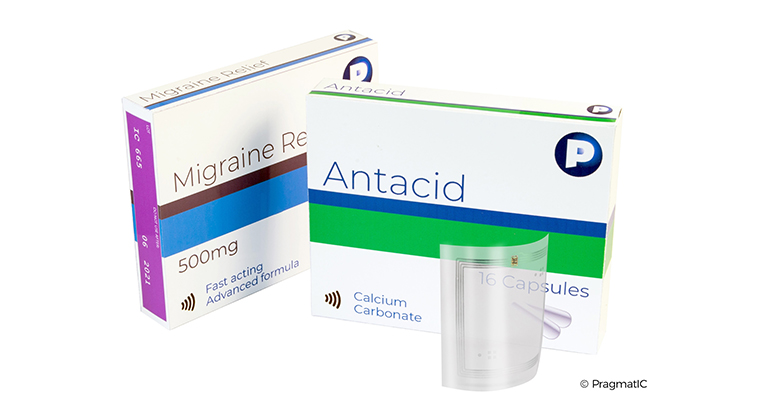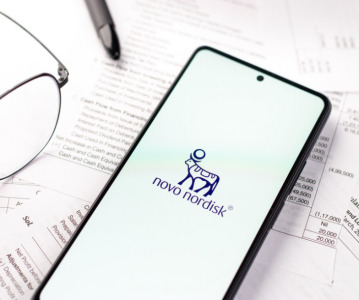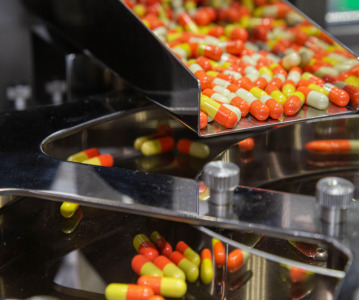It’s time for the pharmaceutical sector to do the smart thing

For many years, well before the arrival of COVID-19, the pharmaceutical sector has faced increasing pressures, with challenges such as fake goods and grey market diversion. There is also increased emphasis on how to ensure patient adherence, as this directly correlates with improved outcomes. Here we examine how recent developments in flexible electronics, RFID and smart packaging could help in these areas.
Gillian Ewers, VP Marketing, PragmatIC
Challenges
Counterfeit goods
The worldwide pharmaceutical industry has experienced significant growth during the past two decades - revenues worldwide totalled $1.25 trillion in 2019. The value of the counterfeit market is also considerable, estimated at $200 billion, of which online sales account for around $75 billion. The World Health Organisation (WHO) states that 16% of counterfeits contain the wrong ingredients and another 17% contain the wrong levels of necessary ingredients, meaning that a large proportion of these illegal medications could be harmful and sometimes even fatal.
To combat this, regulatory authorities have been putting various measures in place. For example, the European Falsified Medicines Directive (FMD) regulation which requires pharmaceutical companies to include a unique identifier (UID) and an anti-tampering device. These are used by suppliers to verify and authenticate the products prior to distribution and can be used by retail and consumers to ensure integrity up to the point of consumption or application. Currently companies use 2D barcodes for the unique identification which requires digital printers. These codes are easy to replicate, can get damaged in transport and are difficult to read in large numbers.
Grey market diversion
Another challenge is grey market diversion, which is when products are not counterfeit but are sold outside approved supply agreements. This could be goods that are bought in a low-priced region, and then sold in another for a much higher price, or it could be medicines that are OTC (Over The Counter) in one country, but under prescription, or prohibited in another territory. Therefore, grey market diversion is not only a problem for suppliers, but also for consumers. Buying from grey market sources because of differences in price is not illegal, but those products may come without local language instructions or information, which could have consequences for the user.
Patient adherence
There may be many reasons why patients do not complete a course of medicines or take the right amount at the right intervals. Time management, forgetfulness, difficult to read instructions, confusing counterindications, lack of knowledge and understanding are all important issues. The consequences are not only a waste of valuable resources, but it can also result in worsening conditions and increase the overall costs of treating the patient.
Technology to the rescue
Advances in flexible electronics and RFID (Radio Frequency IDentification) offer a promising solution to these challenges. An RFID inlay (or tag) can be added under labels or inside packaging, with an integrated circuit (IC) containing a unique identifier (UID). Using this technology manufacturers and retailers can quickly do stock checks, verify the supply chain and identify any hotspots of replicated codes. Assigning a digital UID enables item-level tracking through the whole lifecycle of a product, and crucially with RFID it is more difficult to counterfeit or tamper with as the inlay and IC are not visible and cannot be reprogrammed. With smart packaging patients could more easily access information about their treatment, ask for more details, contact support lines, all with a simple tap of a smartphone. There are also smart blister packs and medicine trays available, that can link with an app to help remind the patient and report quickly if non-adherence becomes an issue.
RFID technology is not new. It has been used for supply chain management in the apparel sector for some time, with considerable success, but previously the costs were too high for use in large volumes, or on low margin items, due to the cost of the conventional electronics involved. Fortunately, recent developments mean that now it is possible for the pharmaceutical sector to do the smart thing to tackle challenges such as counterfeit goods, grey market diversion and patient adherence. This item-level digital monitoring technology also has potential to extend into the tracking of millions of pathology samples and vaccines, and in future could be combined with sensors to track the temperature of items during transportation. And there are many other applications in the healthcare sector. We see an exciting future enabled with this technology, helping to increase efficiencies, reduce costs and improve patient outcomes, and it starts now.
Related News
-
News Pharmapack Awards 2024 Patient-Centric Design Award Winner – Dr Ferrer BioPharma
The 2024 Pharmapack Awards celebrated the best in innovation and design for the pharmaceutical packaging and drug delivery industry on January 24, 2024. -
News Women in Pharma: Minding the Gap at Pharmapack 2024
2024 marks the first year Pharmapack will host a Diversity track dedicated to bridging the gap within the pharmaceutical packaging and drug delivery sector. The track includes a panel discussion on 'Enabling Diversity in the Workplace,' focused... -
News Pharmapack Awards 2024 - Celebrating Packaging and Drug Delivery Innovation
The 2024 Pharmapack Innovation Awards ceremony celebrated the best in pharmaceutical packaging and drug delivery innovation at all levels. The awards were held on January 24, 2024 at the Paris Expo Porte de Versailles. -
News 2024 Pharma Industry Trends Outlook: Collaboration, Market Maturity, and Digital Futures
The annual CPHI Online 2024 Pharma Trends Outlook, in partnership with Arvato Systems, identifies 12 key industry trends shaping the life sciences industry in the coming year. -
News New Novo Nordisk AI hub for drug discovery to open in London, UK
Danish pharmaceutical giant Novo Nordisk will be opening an AI-based research facility in the heart of London to advance drug discovery operations. -
News BioNTech to begin mRNA vaccine manufacturing in Rwanda by 2025
German biotechnology company BioNTech has stated their intentions to begin production at their mRNA vaccine factory in Rwanda by 2025, which will mark the first foreign mRNA vaccine manufacturing site on the continent of Africa. -
News Women in Pharma: Looking back on 2023 and moving forward to 2024
In this monthly series, we interview women from across the pharmaceutical industry and supply chain to discuss the importance of gender diversity in healthcare, the workplace, and beyond. -
News CPHI Barcelona 2023: Partnering for Success – Managing Outsourcing Relationships to Optimise Manufacturing Operations
During CPHI Barcelona 2023, insightful content sessions offered attendees the chance to explore trending topics with expert speakers and panellists. Here, we summarise what the pharma industry and supply chain are talking about the most.
Position your company at the heart of the global Pharma industry with a CPHI Online membership
-
Your products and solutions visible to thousands of visitors within the largest Pharma marketplace
-
Generate high-quality, engaged leads for your business, all year round
-
Promote your business as the industry’s thought-leader by hosting your reports, brochures and videos within your profile
-
Your company’s profile boosted at all participating CPHI events
-
An easy-to-use platform with a detailed dashboard showing your leads and performance







